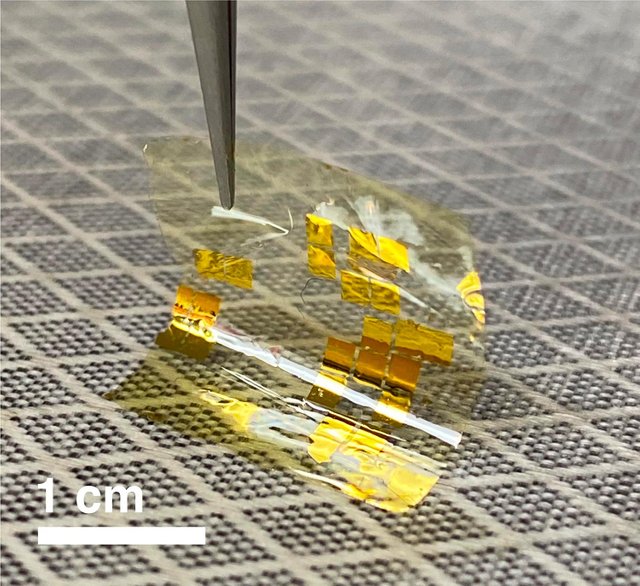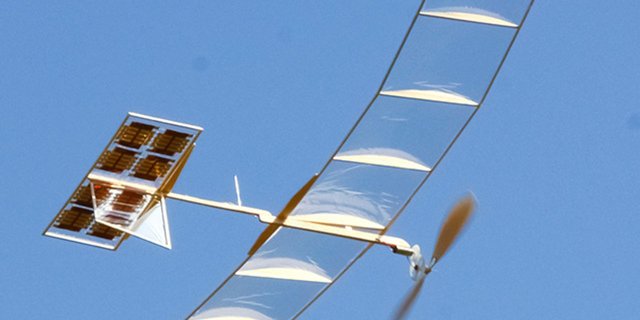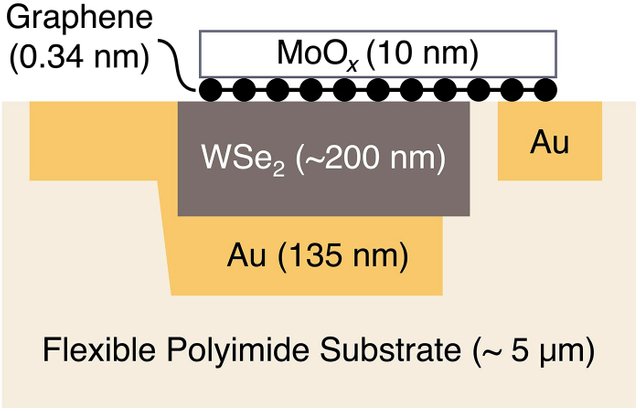New photovoltaic materials for ultrathin, lightweight solar panels/Nuevos materiales fotovoltaicos para paneles solares ultrafinos y ligeros

Source
As far as solar energy collection is concerned, without a doubt, the star element is silicon, in fact 95% of solar panels are made with this material, but these panels are heavy, bulky and rigid to use in certain types of applications where the relationship weight-power optimization is a crucial factor.
En lo que a la captación de energía solar se refiere sin duda el elemento estrella es el silicio, de hecho el 95% de los paneles solares están fabricados con este material, pero estos paneles son pesados, voluminosos y rígidos para utilizar en cierto tipo de aplicaciones donde la optimización peso-potencia sea un factor crucial.
That is why the race has started among experts in solar engineering to create new solar panels with increasingly thin, flexible and efficient photovoltaic materials such as the so-called transition metal di-chalcogenides or TMD, which absorb very high levels of solar radiation compared to other materials.
Por ello se ha iniciado la carrera entre los expertos en ingeniería solar para crear nuevos paneles solares con materiales fotovoltáicos cada vez más delgados, flexibles y eficientes como los llamados di-calcogenuros de metales de transición o TMD, que absorben niveles muy altos de radiación solar en comparación con otros materiales.
 Source
SourceThis technology cannot be said to be completely innovative, but until now only 2% yields were achieved, which is ridiculous compared to the almost 30% efficiency that silicon panels can achieve and it will be necessary to shorten distances if this technology is to be used massively.
Esta tecnología no se puede decir que es del todo innovadora pero hasta ahora solo se conseguían rendimientos del 2% que son ridículos comparados con casi el 30% de eficiencia que pueden alcanzar los paneles de silicio y será necesario acortar distancias si se pretende utilizar masivamente esta tecnología.
The new prototype created at Stanford already achieves an efficiency of more than 5% and according to its creators it can reach up to 27% efficiency with optical and electrical optimizations that would place it very close to the performance of silicon cells in addition to obtaining a weight-to-power ratio 100 times greater than any TMD created to date.
El nuevo prototipo creado en Stanford ya alcanza una eficiencia de más del 5% y según sus creadores se puede alcanzar hasta un 27% de eficiencia con optimizaciones ópticas y eléctricas o que lo situaría muy cerca del rendimiento de las celdas de silicio además de obtener una una relación peso- potencia 100 veces mayor que cualquier TMD creado hasta la fecha.

Source
Based on this relationship, the prototype produced 4.4 watts per gram, which is a very competitive amount compared to other solar cells manufactured today, including other experimental prototypes in the test phase and according to the experts this figure could be increased as the practical limit of about 46 watts per gram.
Basado en esta relación el prototipo produjo 4,4 vatios por gramo que es una cantidad muy competitiva comparada con otras células solares fabricadas en la actualidad, incluidos otros prototipos experimentales en fase de prueba y según los expertos esta cifra podría incrementarse pues el límite práctico de unos 46 vatios por gramo.
The researchers tested the flexibility and robustness of these TMDs by bending them around a metal cylinder less than a third of an inch (~ 0.8 cm) thick, this new type of flexible solar panels are very useful for use as a coating on portable devices, laptops and even light cars or drones.
Los investigadores probaron la flexibilidad y robustez de estos TMD doblándolos alrededor de un cilindro de metal de menos de un tercio de pulgada(~0,8 cm) de grosor, este nuevo tipo de paneles solares flexibles son muy útiles para utilizarlos como recubrimiento en dispositivos portátiles e incluso automóviles o drones ligeros.
More information/Más información
https://scitechdaily.com/new-photovoltaic-materials-developed-by-stanford-scientists-for-ultrathin-lightweight-solar-panels/
Excelentes noticias tecnológicas estoy viendo en tu cuenta. Te sigo de aquí en adelante por el excelente contenido. Saludos.
Gracias, por aquí andaremos.
In all technological innovation there are always improvements in later years with respect to benefits. Hence the advances in favor of humanity. Greetings.
At present we are experiencing a difficult time from the energy point of view, since unfortunately we rely on hydrocarbons that most of the time is very polluting. for this we have to quickly find a solution. Renewable energy is a good option, and among it solar stands out, that is why it is important that these projects, in search of photovoltaic materials that help increase the efficiency of solar cells, begin to give results, because the planet, for some time, it began to take its toll for all the damage caused.
This solar panel is coming with something new which is more convenient. Chances r high that much people will like it.
Hola @mauromar, llegara el día que nuestra ropa sea capaz de funcionar como panel solar.

Hello @mauromar, happy new year..!
This is encouraging news because one of the great limitations of the use of photovoltaic panels is the weight of the honeycombs, we know that they must cover a large surface to achieve the required energy demand and their weight has always been a big problem. .
Hopefully these solar panels made with lighter materials will be on the market soon.
Happy new year for you too @tocho2
Thank you very much for sharing this information with us.